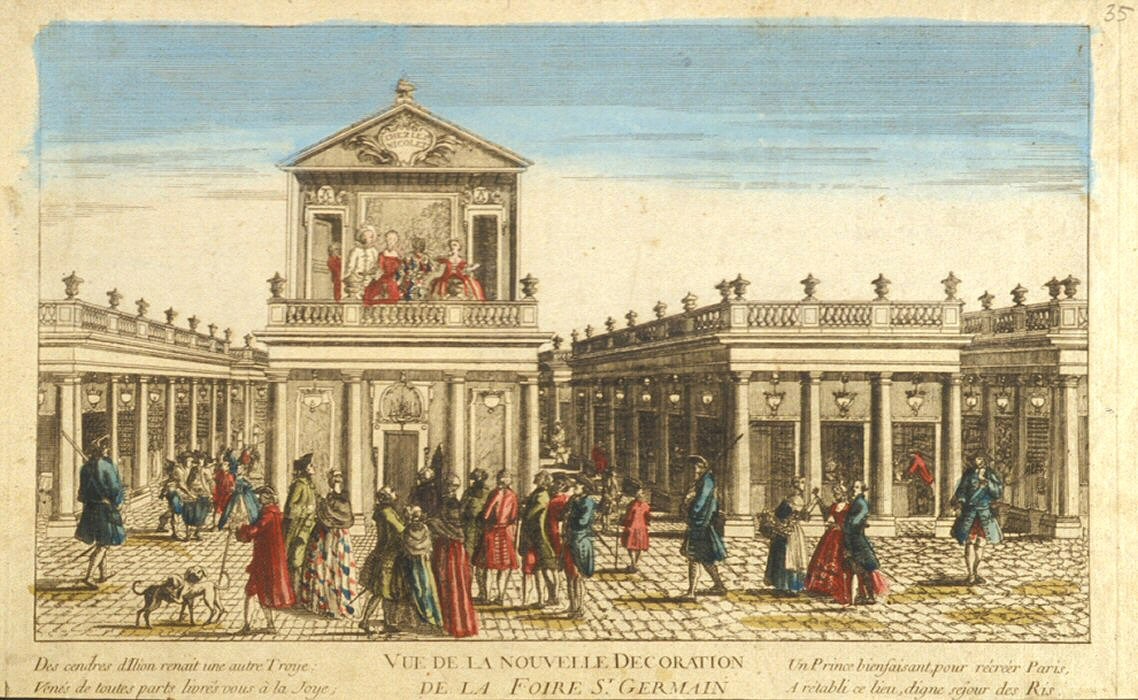Parade (French Street Entertainment) on:
[Wikipedia]
[Google]
[Amazon]
 A ''parade'' is a type of French street entertainment which originated during the
A ''parade'' is a type of French street entertainment which originated during the
Gabriel Jacques de Saint-Aubin - A Street Show in Paris (La Parade du Boulevard) - WGA20657.jpg ,
ParadeBoulevardTemple.jpg ,
A French 'parade' in the 18th century - Pougin 1887 p581.jpg ,
 A ''parade'' is a type of French street entertainment which originated during the
A ''parade'' is a type of French street entertainment which originated during the Renaissance
The Renaissance ( , ) , from , with the same meanings. is a period in European history
The history of Europe is traditionally divided into four time periods: prehistoric Europe (prior to about 800 BC), classical antiquity (800 BC to AD ...
. It consisted of a group of entertainers, which could include actors, singers, dancers, jugglers, and other types of performers, who took part in parades (in the usual sense of the word) and entertained spectators at those times when the procession stopped moving.Bartlet, M. Elizabeth C., "Parade" in Sadie 1992, vol. 3, p. 850.
In the 18th century the term was applied to short improvisational buffooneries, typically incorporating vulgarities, which were performed either on an outdoor platform or a balcony in order to entice passersby into show-booths and theatres at the fairs
A fair (archaic: faire or fayre) is a gathering of people for a variety of entertainment or commercial activities. Fairs are typically temporary with scheduled times lasting from an afternoon to several weeks.
Types
Variations of fairs incl ...
or on the Boulevard du Temple
The Boulevard du Temple, formerly nicknamed the "Boulevard du Crime", is a thoroughfare in Paris that separates the 3rd arrondissement from the 11th. It runs from the Place de la République to the Place Pasdeloup, and its name refers to the ne ...
. The characters were often drawn from the '' commedia dell'arte'' tradition. According to Elizabeth Bartlet "the humour was of the crudest sort, relying on sexual innuendos or even explicit remarks and actions, obscene gestures and references to defecation and other bodily functions."Londré 1991, p. 58.
The ''parades'' strongly influenced the 18th-century genre of ''comédie-parade'', a type of play or '' opéra-comique'', usually in one act, which also used characters from the ''commedia dell'arte''. These pieces were a bit more refined and polite, at least when presented in public theatres.
Notes
Sources
* Londré, Felicia Hardison (1991). ''The History of World Theatre: From the English Restoration to the Present''. New York: Continuum. . *Sadie, Stanley
Stanley John Sadie (; 30 October 1930 – 21 March 2005) was an influential and prolific British musicologist, music critic, and editor. He was editor of the sixth edition of the '' Grove Dictionary of Music and Musicians'' (1980), which was publ ...
, editor (1992). ''The New Grove Dictionary of Opera
''The New Grove Dictionary of Opera'' is an encyclopedia of opera, considered to be one of the best general reference sources on the subject. It is the largest work on opera in English, and in its printed form, amounts to 5,448 pages in four volu ...
'' (4 volumes). London: Macmillan. {{ISBN, 978-1-56159-228-9.
Theatre in France
Theatrical genres